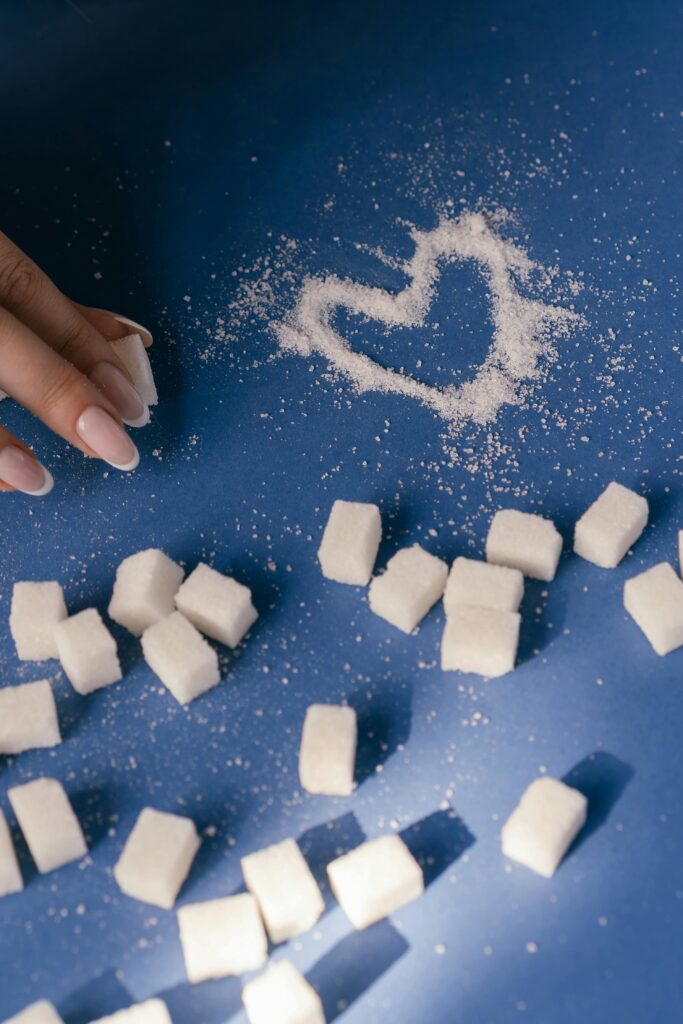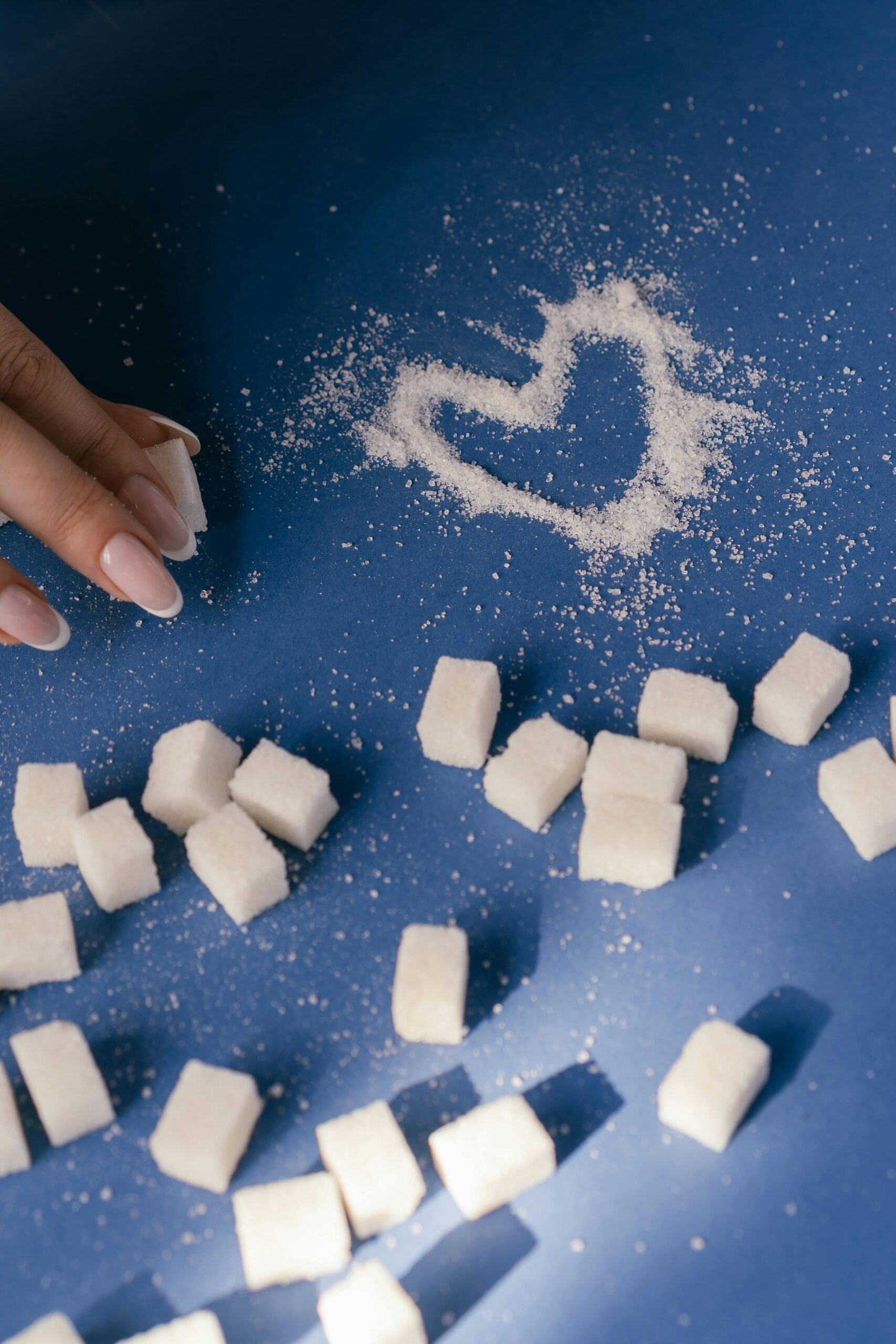Understanding Sucrose 2025: A Simple Sugar Guide for Health-Conscious People
Sucrose, known as table sugar, is a carbohydrate found in many plants. It is a simple sugar made from glucose and fructose. This compound is common in our diet.
Sucrose, a disaccharide, is a sugar composed of glucose and fructose subunits. It is produced naturally in plants and is the main constituent of white sugar. It has the molecular formula C
12H
22O
11.

Sources of Sucrose
Sucrose comes from sugarcane and sugar beets. These plants are processed to extract sugar. Fruits and vegetables also contain sucrose, but in smaller amounts.
Structure and Function
Sucrose is a disaccharide, meaning it is made of two smaller sugars. It consists of one glucose molecule and one fructose molecule. Our body uses enzymes to break down sucrose into glucose and fructose. These sugars are then used for energy.
Health Effects
Eating too much sucrose can lead to health problems. It can cause tooth decay, weight gain, and diabetes. It is important to consume sucrose in moderation. Eating a balanced diet with natural sources of sugar is better for health.
Uses in Food
Sucrose is a common sweetener in food and drinks. It adds sweetness and texture to baked goods, candies, and beverages. It also helps preserve food by preventing spoilage.
Sucrose Alternatives
Many people look for alternatives to sucrose. Natural sweeteners like honey and maple syrup are popular. Artificial sweeteners, such as aspartame and sucralose, provide sweetness without the calories.
Sucrose is a widely used sugar in our diet. Understanding its sources, structure, and effects can help us make healthier choices. Moderation is key to enjoying the sweetness of sucrose without the negative health impacts.
“Sugar” is a general term that refers to sweet, soluble carbohydrates. There are many types of sugar, including glucose, fructose, and lactose, each found in different foods.
Sucrose: is a specific type of sugar. It’s a disaccharide composed of one glucose molecule and one fructose molecule. Sucrose is commonly known as table sugar and is often used in cooking and baking.
Key differences:
Category: Sugar is a broad category; sucrose is a specific type.
Composition: Sucrose consists of glucose and fructose.
Sources: Sucrose is extracted from sugarcane and sugar beets, while other sugars come from various sources like fruits (fructose) and milk (lactose).
Understanding these differences helps in making informed choices about your diet and sugar consumption.
Types of Sugar: Glucose, Fructose, and Lactose
 Glucose
Glucose
Glucose is a simple sugar (monosaccharide) that our body uses for energy. It’s found in many foods, especially carbohydrates like bread, rice, and potatoes. When you eat carbohydrates, your body breaks them down into glucose, which is then used by your cells for energy.
Nutrient Value:
Essential for energy: Glucose is a primary energy source for the brain and muscles.
Blood sugar: It is the main sugar found in the blood.
Health Considerations:
Moderation is key: Consuming too much glucose, especially from refined sugars, can lead to high blood sugar levels, increasing the risk of diabetes and other health problems.
Fructose
Fructose is another simple sugar found in fruits, honey, and root vegetables. It is sweeter than glucose and is often used in sweetening processed foods and beverages.
Eating Value:
Natural sweetness: Found naturally in fruits and provides a sweet taste without adding too many calories.
Better with fibre: Fruits contain fibre, which helps slow the absorption of fructose, making it healthier.
Health Considerations:
Limit intake from processed foods: High fructose corn syrup, a common sweetener in sodas and snacks, can contribute to obesity, fatty liver, and other metabolic issues.
Prefer natural sources: Eating whole fruits is healthier than consuming fructose from processed foods.
 Lactose
Lactose
Lactose is a disaccharide composed of glucose and galactose. It’s found in milk and dairy products. To digest lactose, your body needs an enzyme called lactase.
Eating Value:
Calcium source: Dairy products are a good source of calcium, important for bone health.
Variety of nutrients: Dairy also provides protein, vitamins, and other nutrients.
Health Considerations:
Lactose intolerance: Some people lack enough lactase enzyme, leading to digestive discomfort when consuming lactose.
Moderation: If you’re lactose intolerant, you can opt for lactose-free dairy products or alternatives like almond milk.
Understanding these sugars helps us make better dietary choices. While glucose, fructose, and lactose each provide benefits, it’s crucial to consume them in moderation, especially from natural sources rather than processed foods. Excessive intake, particularly from added sugars, can lead to health issues like obesity, diabetes, and liver problems.
Stevia: A Natural Sweetener
Stevia is a plant-based sweetener derived from the leaves of the Stevia rebaudiana plant. It has gained popularity as a healthier alternative to sugar due to its natural origins and low-calorie content.
Sweetening Power
High sweetness: Stevia is much sweeter than regular sugar. It can be 200 to 300 times sweeter than sucrose.
Low calorie: Unlike sugar, stevia provides sweetness without adding calories, making it ideal for those looking to reduce calorie intake.
Health Benefits
Blood sugar control: Stevia does not raise blood sugar levels, making it suitable for people with diabetes or those monitoring their blood sugar.
Weight management: Because it’s calorie-free, stevia can help in managing weight by reducing overall calorie consumption.
Natural Origin
Plant-based: Stevia is extracted from the leaves of the Stevia rebaudiana plant, which has been used for centuries in South America.
Potential Downsides
Taste: Some people find stevia has a slight aftertaste, which can be a bit bitter or liquorice-like.
Processing: While stevia is natural, the commercial products available often undergo processing. It’s essential to choose less processed versions if you aim for natural sweetening.
Stevia is a powerful natural sweetener with significant health benefits, especially for those managing diabetes or seeking to reduce calorie intake. It provides a sweet taste without the negative effects of sugar, making it a valuable addition to a health-conscious diet. However, as with any sweetener, moderation and personal preference are key to enjoying its benefits.
Balancing your diet with a variety of nutrients from whole foods ensures you enjoy the sweetness of life without compromising your health.
 Jaggery
Jaggery
Jaggery, also known as “gur” in some regions, is a traditional unrefined sugar made from sugarcane or palm sap. It is not classified as a single type of sugar like glucose, fructose, or lactose. Instead, it contains a mix of sucrose, glucose, and fructose, along with some minerals and vitamins that are often removed during the refining process of table sugar.
Benefits of Jaggery
Nutrient-rich: Jaggery contains small amounts of minerals like iron, magnesium, potassium, and phosphorus.
Natural sweetener: It is less processed than white sugar and retains more natural nutrients.
Health Considerations
Moderation is key: Despite its nutrients, jaggery is still high in sugar content. Overconsumption can lead to the same health issues associated with other sugars, such as weight gain and increased risk of diabetes.
Calories: It has a similar calorie content to white sugar, so portion control is important for those watching their calorie intake.
Conclusion
Jaggery can be a better alternative to refined sugar due to its nutrient content, but it should still be consumed in moderation. Including it in your diet can add sweetness and some beneficial minerals, but balance is essential to maintain good health.
References
- U.S. National Library of Medicine: [Sucrose](https://medlineplus.gov/ency/article/002444.htm)
- World Health Organization: [Sugars intake for adults and children](https://www.who.int/publications/i/item/9789241549028)
- Mayo Clinic: [Added sugars: Don’t get sabotaged by sweeteners](https://www.mayoclinic.org/healthy-lifestyle/nutrition-and-healthy-eating/in-depth/added-sugar/art-20045328)
Disclaimer: The contents of this article are intended to raise awareness about common health issues and should not be viewed as sound medical advice for your specific condition. You should always consult with a licensed medical practitioner before following any suggestions outlined in this article or adopting any treatment protocol based on the contents of this article.
Mighty Patch Original Review 2025: A Comprehensive Look at the Hydrocolloid Acne Pimple Patch
If you enjoyed this article, please like and share it with your friends, and don’t forget to subscribe for more great content!


